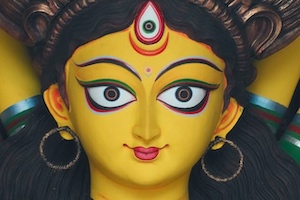Flavours finding favours with city’s foodies
The Statesman | 27 September 2025The pavement platter:
The festive season ushers in the endurance sport that pandal-hopping has long become, fuelled by delicacies simmering in the rustic corners of Calcutta’s streets. Crackling iron cauldrons give life to timeless telebhajas, ranging from beguni to alur chop: savouries borne of hard spices and hot oil that have catered to the Bengali appetite for generations. Phuchkas burst with tamarind water, their fleeting, playful rhythm punctuating stoppages between pandals on sleepless nights; while momos, the contemporary cousins of classic street fare, arrive neatly folded into the city’s evolving palate.
“Pujo manei toh pet-pujo,” claimed a college-goer from Baghbazar, expressing his willingness to compromise on health for the sake of Puja treats. “Sometimes, it’s worth revelling in the mental lift that comes from unhealthy street food. Nothing beats the satisfaction of a full belly, and any gastronomic consequences afterwards are more than worth it.”
“A happy heart often comes at the cost of an upset stomach,” he emphasises.
Commercial, curated spreads:
Puja has also found its way into sophisticated eateries, which dish out curated menus designed to align nostalgia with novelty.
Restaurants specialising in Bengali cuisine offer special mahabhoj thalis, featuring an array of delights: from the fragrant Basanti pulao and crisp bhetki paturi to the pungent shorshe ilish and hearty mutton dak-bungalow. Each dish carries the weight of tradition, turning every meal into a celebration of heritage.
However, culinary creativity finds expression in more niche, cosmopolitan corners. A café in Jadavpur, for instance, tempts the curious with daab chingri pasta. At Golpark, nolen gurer tiramisu re-imagines the classic Italian dessert, a tongue-in-cheek homage to both Kolkata winters and Venetian cafés. These experiments ensure that the Italian Renaissance gets a chance to greet its Bengali counterpart, albeit on a plate!
The divine offering:
It is on Ashtami afternoon that the festive platter reaches its epicurean crescendo. This is the time reserved in the name of bhog. Served on banana leaves, the steaming khichuri, labra, and payesh offer a strange, soulful medley of modesty and regality. The aroma of mustard, ghee, and spice drifts through lanes and courtyards, mingling with the faint fragrance of marigold and incense. As an offering to the goddess, the bhog becomes a shared sacrament.
An engineer from Baguihati, now residing in Manchester, shares, “Every Ashtami, my wife and I cook khichuri-labra meal for our family. It’s our way of ensuring that, even far from home, our children grow up familiar with the flavours and customs of Kolkata.”
Durga Puja in Kolkata allows culinary practices to manifest as a living archive, through which the interplay of community, devotion, and urban ethos is perpetually inscribed. To partake is to claim one’s place in the city’s story, where identity and indulgence intertwine.
